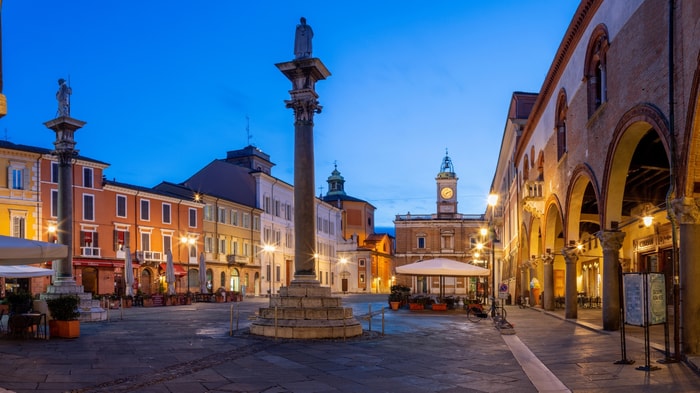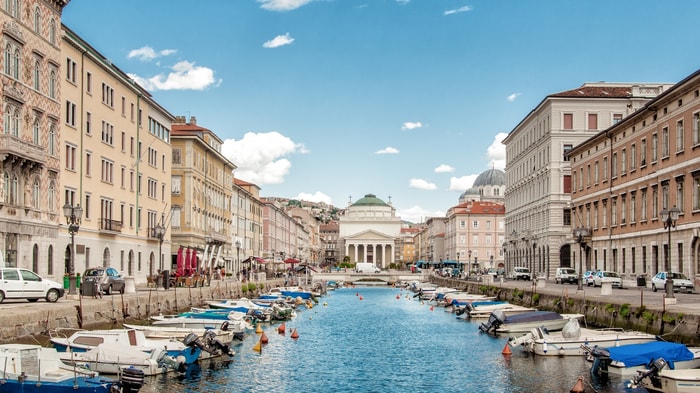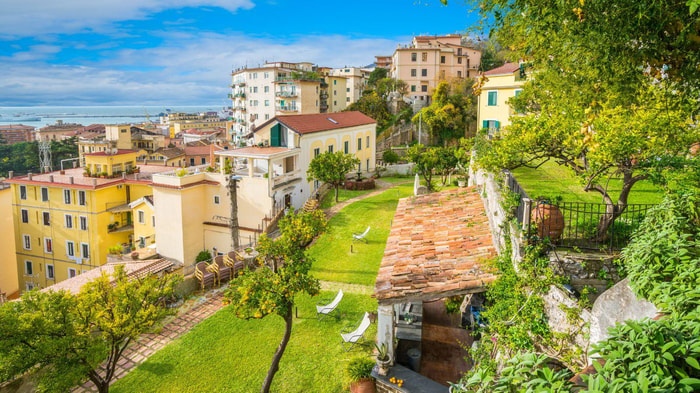Lake Garda, Venice & Luxury Adriatic Cruise
with hotel stays in Lake Garda and Venice
Cruise & Stay package
Your holiday begins with three nights in a charming 4-star hotel nestled by the picturesque Lake Garda. Enjoy the serene beauty of the region, with its stunning lakeside views, charming villages, and the option to explore historical landmarks or indulge in tantalizing local dishes. Then take a scenic train journey through the Italian countryside to Venice where you can immerse yourself in the romantic atmosphere of Venice, taking in the iconic canals, architecture, and cultural richness of the city. Next it is time to embark on Celebrity Constellation for a remarkable 10-night cruise through the Adriatic Sea. Prepare for a luxury voyage that highlights Croatia, Montenegro, and captivating destinations in Italy. Expect to experience diverse cultures, historical sites, and breathtaking landscapes as you hop from one enchanting destination to another. As your cruise concludes, you will transfer to the airport for your flight home while cherishing the memories of this amazing Adriatic adventure.
Other departures and itineraries available between April & October 2024.

-
Departure Date: 14th October 2024
-
Total Nights: 14 Nights
-
Cruise: Celebrity Constellation
-
Package Type: Cruise and Stay
-
Includes Outbound Flight
-
Includes Inbound Flight
-
Includes Train Travel
-
Includes Hotel Stay
Captain Kate McCue has come to symbolise the modern approach of Celebrity Cruises. The Instagram-famous American skipper - accompanied by her cat Bug Naked - has taken the helm of the line's latest ship: Celebrity Beyond.
Other ships in the fleet have been overhauled and given new facilities, while Celebrity also launched its 100-passenger Galapagos expedition ship, Celebrity Flora, and announced a new partnership with wellness guru Gwyneth Paltrow.
-
Return flights from the UK
-
3-night stay in Lake Garda
-
1-night stay in Venice
-
Scenic rail journey from Lake Garda to Venice
-
Scenic rail journey from Venice to Ravenna
-
10-night full-board cruise














Discover a vacation like no other aboard Celebrity Constellation. Set sail and experience luxury at every turn. Enjoy unforgettable spaces, world-class amenities, and all of the distinct features that make our cruises so incredible.
Lake Garda Hotel To Be Confirmed By Cruise2 On Booking
Venice Hotel To Be Confirmed By Cruise2 On Booking
Outbound Flight
Inbound Flight
Similar package deals
India's Golden Triangle & Luxury Far East Voyage
- Includes hotel stay
- Includes outbound flight
- Includes inbound flight
- 22 nights, departs on the 18th Nov 2025
- Return flights from the UK
- 2-night stay in Delhi
- 2-night stay in Agra
- 2-night stay in Jaipur
- 1-night stay in Mumbai
- 13-night Full-Board cruise
- 7-night Fully Escorted 4* B&B Golden Triangle Tour
- Full-day tour of Old & New Delhi
- Full-day tour of Agra
- Morning tour of Fatehpur Sikri
- Full-day tour of Jaipur
- Flight from Jaipur to Mumbai
- Cruise info: Celebrity Cruises,
- Itinerary: Outbound flight from the UK to Delhi, Delhi hotel stay, Full-day Delhi Tour +19 more
Miami Beach & Luxury All-Inclusive Southern Caribbean Cruise
- Includes hotel stay
- Includes outbound flight
- Includes inbound flight
- 12 nights, departs on the 24th Nov 2024
- 12 night Cruise & Stay package
- Return flights from the UK
- 1 night 4* Hotel Stay in Miami
- 10 night All-Inclusive cruise onboard Celebrity Eclipse
- Drinks & Wi-Fi
- Taxes & Fees
- Low Deposit option
- Cruise info: Celebrity Cruises,
- Itinerary: Fly from the UK to Miami, 1-night 4* Hotel Stay in Miami, Fort Lauderdale. Embark ship +10 more
Luxury Far East Voyage & Hong Kong Explorer
- Includes hotel stay
- Includes outbound flight
- Includes inbound flight
- 15 nights, departs on the 12th Mar 2026
- Return flights from the UK
- Return flights from the UK
- Return flights from the UK
- Return flights from the UK
- Return flights from the UK
- Cruise info: Celebrity Cruises,
- Itinerary: Fly overnight from the UK to Hong Kong., Arrive. Transfer for a 1-night 4* B&B Hotel Stay in Hong Kong, Hong Kong. Transfer and Embark ship – Celebrity Solstice +9 more
Luxury All-Inclusive Singapore to Sydney Voyage with Stays
- Includes hotel stay
- Includes outbound flight
- Includes inbound flight
- 19 nights, departs on the 25th Mar 2025
- Return flights from the UK
- Private Transfers in Singapore
- 1-night 4* B&B Hotel Stay in Singapore
- 13-night All-Inclusive cruise onboard Celebrity Solstice
- FREE Stateroom upgrade from Interior to Oceanview!
- 3-night 4* Hotel Stay in Sydney
- Taxes & Fees
- Cruise info: Celebrity Cruises,
- Itinerary: Fly overnight from the UK to Singapore, Arrive. Transfer for a 1-night 4* B&B Hotel Stay in Singapore, Singapore. Transfer and Embark Ship – Celebrity Solstice +9 more
Lake Garda, Venice & Luxury Adriatic Cruise
- Includes hotel stay
- Includes outbound flight
- Includes inbound flight
- 15 nights, departs on the 1st May 2025
- Return flights from the UK
- Return airport transfers
- 3-night 4* B&B Hotel Stay in Lake Garda
- Scenic Rail Journey from Lake Garda to Venice
- 1-night 4* B&B Hotel Stay in Venice
- Scenic Rail Journey from Venice to Ravenna
- 11-night Full-Board cruise onboard Celebrity Constellation
- Taxes & Fees
- Cruise info: Celebrity Cruises,
- Itinerary: Fly from the UK to Verona. Transfer for a 3-night 4* B&B Hotel Stay in Lake Garda, Lake Garda Hotel Stay, Board Train to Venice - 1-night 4* B&B Hotel Stay in Venice +10 more
Miami Beach & Luxury All-Inclusive Southern Caribbean Cruise
- Includes hotel stay
- Includes outbound flight
- Includes inbound flight
- 12 nights, departs on the 24th Nov 2024
- Return flights from the UK
- 1-night 4* Hotel Stay in Miami
- 10-night All-Inclusive cruise onboard Celebrity Eclipse
- Drinks & Wi-Fi
- Taxes & Fees
- Cruise info: Celebrity Cruises,
- Itinerary: Fly from the UK to Miami. 1-night 4* Hotel Stay in Miami, Fort Lauderdale. Embark ship - Celebrity Eclipse, Tortola +6 more
Vegas, Miami & All-Inclusive Luxury Bahamas Cruise
- Includes hotel stay
- Includes outbound flight
- Includes inbound flight
- 11 nights, departs on the 30th Oct 2024
- Return flights from the UK
- 3-night 4* Hotel Stay in Las Vegas
- One-way flight from Las Vegas to Miami
- 2-night 4* Hotel Stay in Miami
- 5-night All-Inclusive cruise onboard Celebrity Reflection
- FREE Stateroom Upgrade from Oceanview to Balcony
- Taxes & Fees
- Cruise info: Celebrity Cruises,
- Itinerary: Fly from the UK to Las Vegas. 3-night 4* Hotel Stay in Las Vegas, Las Vegas Hotel Stay, Fly from the Las Vegas to Miami. 2-night 4* Hotel Stay in Miami +7 more
Lake Garda, Venice & Luxury Adriatic Cruise
- Includes hotel stay
- Includes outbound flight
- Includes inbound flight
- Includes train travel
- 14 nights, departs on the 14th Oct 2024
- Return flights from the UK
- 3-night stay in Lake Garda
- 1-night stay in Venice
- Scenic rail journey from Lake Garda to Venice
- Scenic rail journey from Venice to Ravenna
- 10-night full-board cruise
- Discount for 3rd and 4th guest
- Cruise info: Celebrity Cruises,
- Itinerary: Outbound flight from the UK to Verona, Italy, Lake Garda hotel stay, Train to Venice +14 more
















